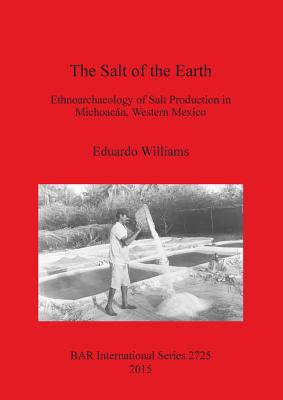
- Afhalen na 1 uur in een winkel met voorraad
- Gratis thuislevering in België vanaf € 30
- Ruim aanbod met 7 miljoen producten
- Afhalen na 1 uur in een winkel met voorraad
- Gratis thuislevering in België vanaf € 30
- Ruim aanbod met 7 miljoen producten
The Salt of the Earth
Ethnoarchaeology of Salt Production in Michoacán, Western Mexico
Eduardo WilliamsOmschrijving
The present study offers new information on salt production in Michoacán, broadening our perspectives on the role played by common salt, or sodium chloride, in the cultural development of the pre-Hispanic Tarascan state. The research on which this book is based began in 1996 with an interdisciplinary perspective that combines archaeological, ethnographic, and ethnohistorical approaches, as well as oral history. The geographical areas where fieldwork was conducted by the author were the eastern part of the Lake Cuitzeo Basin, and the northern area of the Michoacán coast with the adjoining coastal strip in southern Colima. In these areas one can still find saltworks that employ traditional production techniques, similar to those utilized in pre-Hispanic times, as reported in 16th century sources. The research focused on the cultural and technological processes and the material culture associated with salt-making, especially the artefacts and techniques used by the salt-makers, and their archaeological visibility. We also used ethnohistorical information to document the ancient salt-making techniques in Michoacán and neighbouring areas. The main goal of this research was thus to obtain, through ethnographic observation, processual information that would aid in the interpretation of the archaeological record by means of analogy.
Specificaties
Betrokkenen
- Auteur(s):
- Uitgeverij:
Inhoud
- Aantal bladzijden:
- 154
- Taal:
- Engels
- Reeks:
- Reeksnummer:
- nr. 2725
Eigenschappen
- Productcode (EAN):
- 9781407313801
- Verschijningsdatum:
- 30/06/2015
- Uitvoering:
- Paperback
- Formaat:
- Trade paperback (VS)
- Afmetingen:
- 208 mm x 295 mm
- Gewicht:
- 521 g

Alleen bij Standaard Boekhandel
Beoordelingen
We publiceren alleen reviews die voldoen aan de voorwaarden voor reviews. Bekijk onze voorwaarden voor reviews.











